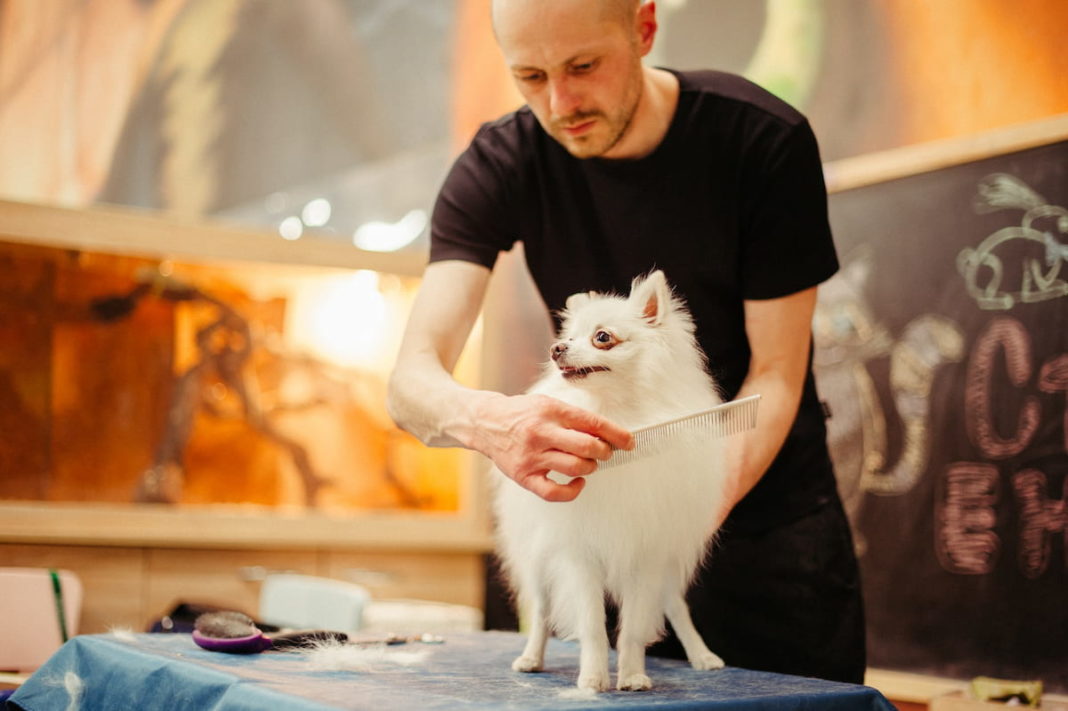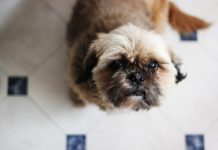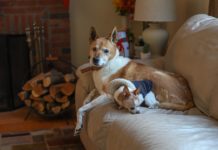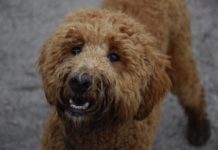Contents
Brushing
Training
Clipping
Bathing
Finishing
Grooming tools
Many dogs benefit from a clip, especially active pets, bitches ready to whelp may need to be shaved down, and old dogs may need to have hair clipped to make them more hygienic.
Clipping can be done at home if you have good-quality equipment and take some lessons. A grooming reference book could be useful, but it won’t replace the supervised practice that a knowledgeable groomer can provide.
Beginners should first become good at using basic clipping equipment before moving on to finer, show clipping blades and expensive scissors. Not all dogs should be clipped.
Clipping is not recommended for some of the double-coated northern breeds since they need their coat to protect against both heat and cold. Once clipped down, some double-coated breeds can be extremely slow to re-grow coat.
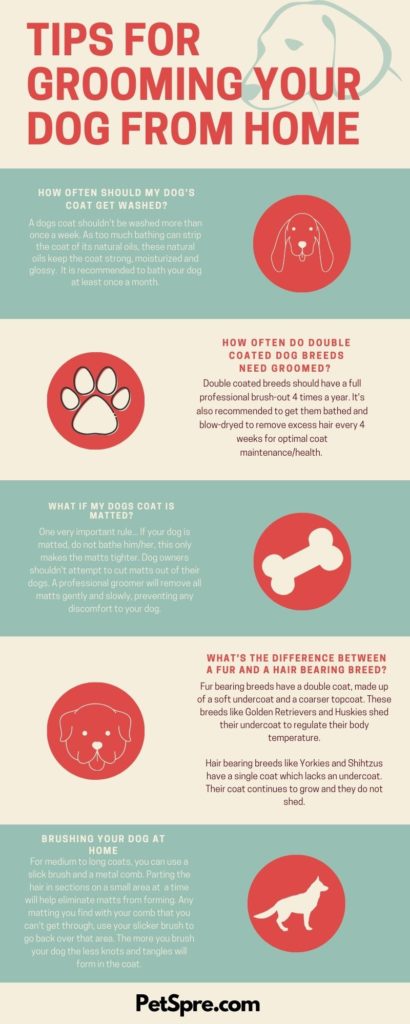
Brushing
Clipping off hair doesn’t negate brushing. If you want to set yourself up for clipping success, then your dog’s coat should be clean and mat-free.
If the coat is matted, your dog will need a shorter haircut than would be ideal. You will have to clip underneath mats that lie close to the skin. This increases the chance of your dog getting clipper injuries. Coats that are dirty and matted dull the clipper blades, making clipping longer. The result will be an uneven clip, several dull blades and a tired dog that might be fed up with your home-grooming efforts.
If your dog has become matted, it’s wise to let a good professional groomer tackle the job first. Once the coat is shorter and more manageable, and if you still want to clip your dog at home, then you’ll be starting with the coat already in good condition.
If you can’t afford the services of a professional, then you can try to contact your national breed club or rescue organization to see if you can find someone to help you untangle or clip your way safely out of the mats. Severely matted, neglected dogs need to be clipped at a veterinary clinic.
Training
A beginner benefits from having a quiet, confident dog to work on. Some dogs are naturally cooperative about grooming, but others need methodical training to accept home clipping.
Before clipping, your dog should be able to stand still, and allow feet, head, ears and bottom to be handled – either while standing, sitting or lying down.
The dog should be comfortable with the sound and the feel of the clippers – even on the face and feet.
Clipping
Select the blade sizes and blade combs you need for your desired doggy hairstyle. Dark-coloured dogs of various breeds can usually go shorter than white or light-coloured dogs. Light dogs are more prone to clipper burn and sun damage from too-short a haircut.
Clipper burns can be caused by the clipper blades heating up and literally burning the dog. They can also occur from using dull blades that don’t cut well, so the skin becomes red and irritated from blade drag. Clipper burns must be cleaned. If the burn is dry, apply antibiotic cream or soothing aloe vera lotion. If they ooze slightly, then a wound powder is better. Clipper burns are rarely serious; however, they can lead to secondary skin infections, so prompt veterinary attention may be needed.
To prevent burns, keep the clippers and blades in clean, disinfected and in a sharp condition. As you are clipping, frequently apply coolant to the running blades and check the blade heat on the inside of your wrist. If they are getting too warm, switch blades or rest your dog while the blade cools.
In general, keep the blade flat when clipping. Don’t apply any pressure and always clip in the direction of the hair growth, except on the face, where you should clip away from the eyes, and on the feet. Some dogs have a lot of hair swirls in the neck region. Swirls can also be found in unexpected areas. Do not remove too much coat the first time you clip, allowing you to discover the location of swirls and not cause bald areas by accidentally clipping too short against the grain.
Another danger area is skin folds that can be found under the neck, or on the head and muzzle area. Skin folds need to be carefully stretched out for clipping. These are the area’s most likely to suffer from a clipper nick.
Blades such as #10 or #15 give a nice head definition for most breeds. Leave a shorter face clip until you and the dog have good clipping skills. Some people like to use #30 to #40 for foot clips. The finer blades are better for getting under foot mats between the toes, but it is actually safer to loosen foot mats away from the pads with water using your fingers. Use blunt toe scissors to remove the bulk of the mat once you have loosened it. Then, carefully dry the area and clip out any remaining fur. Don’t nick the toe webbing!
Bathing
After completing your initial rough clip, bathe your dog using a gentle moisturizing shampoo. This will remove itchy clipped hairs. If your dog is especially prone to itching and has sensitive skin, use an anti-itch oatmeal shampoo. Blow-, towel- or naturally dry according to coat and style requirements. Use common sense – never clip a wet dog. The dog – and the work area – must be thoroughly dry.
Finishing
This is the process of tidying up your clipper work with scissors and thinning shears, or by going over areas of the coat using a clipper and comb attachment. The dog receives the final styling and blending, so the end result looks smooth and attractive. Some established grooming locations have stylists that specialize in finishing. Trainees and junior groomers may do the brush out and roughed-in clip, then bath and blow-dry. Finishing and scissoring skills take a long time to develop. Most home-clipped dogs will benefit from an occasional visit to a professional groomer to help improve the finish.
Grooming tools
- Light/medium-duty cordless clipper (for small breeds)
- Heavy-duty clippers (ideally two, if you have a number of large dogs to do)
- Blades for body coat – #7F, #4-5F (F stands for Fine, to give a smoother finish)
- Blades for face and feet – #10 (light coats), #15 (dark coats)
- Blade caddy or lady’s makeup/toiletry organizer
- Blade combs – various sizes
- Clipper/blade disinfectant
- Blade coolant
- Antibiotic cream
- Wound powder
- Soothing gel
- Oatmeal shampoo
- Blunt toe scissors

